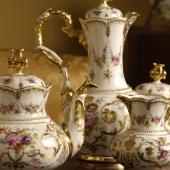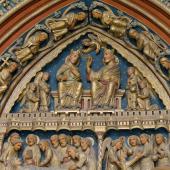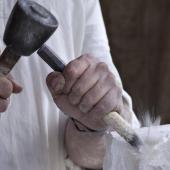Sculpture Art
Sculpture and statuary count to the oldest visual arts in human history. Through all epochs, sculpture developed further in the different cultural regions. New materials have repeatedly been tested, or new techniques were applied that developed sculpting to one of the most versatile and durable arts in the world today.
The earliest discoveries of figurative small-scale sculpture derive from the Stone Age. In ancient times, mighty rulers liked the productions of busts. Whereas in the Middle Ages sculptural art exclusively took place in the ecclesiastical sphere. The architectural sculpture reached its peak in Romanticism around 1060. The greatest artistic challenge of the Gothic period was the construction of a cathedral. Figure portals have been developed for the redesign of the facades. The sculptures merged with the respective architecture, so-called building sculptures were created. In the late Gothic period a change of material around 1400 can be identified - sculptures from then on were preferably made of soft clay or wood.
A new art understanding originated from the sculpture of the Renaissance - the central perspective. The artists primarily devoted to the reproduced physical appearances of humans. The most famous example for a sculpture from this period is Michelangelo`s David. The subsequent eras Baroque and Rococo were mostly about figurative sculptures. According to the spirit of the time the figures were enriched with architectural elements and further developed up to pompous exaggeration.
During the 19th century classicism emerged. Here the preferred materials marble and bronze were style-defining. During this period at many places of the towns statues represented not only princes, but also scholars and artists. Influenced by industrialization during the run-up to modernity, it became possible to apply new process technologies such as galvanoplasty in series.
In the 20th century forms and sculptures developed out of cubism, abstraction and constructivism. The figurative artworks increasingly dissolved over time. Some works only bear one conceptual character and mingle with other modern art forms. For example, the simple cubes by Donald Judds or the naked neon tubes by Dan Flavin represent innovations in art with a new understanding of sculptures.




